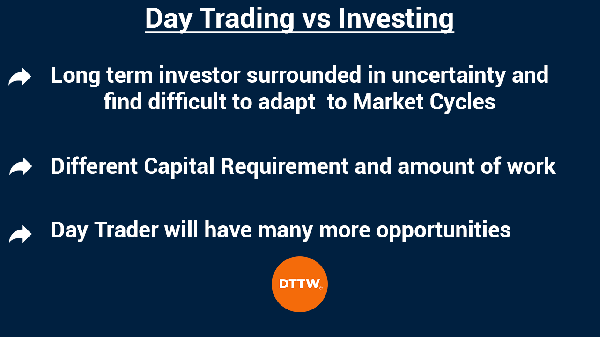Investing In Day Trading Strategies And Risks
Are you tired of investing your money and waiting years for a return? Do you want to make quick profits instead? Consider day trading instead of investing. Here are 5 reasons why.

Definition
First things first, what exactly is day trading? Day trading is the practice of buying and selling securities within the same day in order to make quick profits. It involves closely following the stock market and making decisions based on market trends and news.
How to
So how does one begin day trading? Here are the basic steps:
- Research and educate yourself on the stock market
- Choose a broker or platform to trade on
- Set a budget and choose which securities to invest in
- Watch the market closely and make decisions based on trends and news
- Sell at a profit or cut losses quickly
Of course, these are just the basic steps. Successful day trading takes practice, discipline, and a willingness to learn and adapt to the market.
Tips
Here are some tips for successful day trading:
- Start small and gradually increase your investments
- Have a clear strategy and stick to it
- Always have a stop loss in place to cut losses quickly
- Stay informed on market trends and news
- Have a strong sense of discipline and avoid emotional trading
Remember, day trading is not a get-rich-quick scheme. It takes time, effort, and discipline to succeed. But if done right, it can be a lucrative and exciting way to make quick profits in the stock market.
So if you're ready to try something new and potentially profitable, consider day trading instead of investing. With the right mindset and approach, you just might find success.

Post a Comment for "Investing In Day Trading Strategies And Risks"